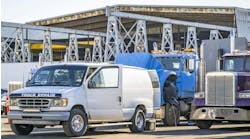Last month a bill was introduced in the Senate that would require new commercial vehicles (26,001 lbs. or more) to be equipped with a device to limit their speed to 65 miles per hour. This is not the first time the legislature has tried to require speed limiters on commercial vehicles, but previous attempts to do so were unsuccessful.
The bill’s sponsors say the intent is to reduce accidents. According to the Federal Motor Carrier Safety Administration’s Large Truck Crash Causation Study, speeding is one of the major factors in motor vehicle crashes. In fact, the study found that 23% of large truck crashes occurred when the truck was traveling too fast for conditions.
There is a lot to be said for the concept of limiting vehicle speed on heavy trucks. First and foremost is the potential to reduce accidents. It stands to reason if driving too fast for conditions was the cause of 23% of accidents involving trucks then limiting the speed of those trucks should eliminate (or at least cut down on) accidents caused by driving too fast.
Beyond accident reduction, fleets will also see savings in fuel, tire and maintenance costs by limiting how fast their trucks can be driven.
Today it is fairly easy to set up a truck correctly in terms of torque, horsepower, rear-end ratio, etc. Every OEM has an electronic spec’ing tool that helps fleets optimize trucks for their applications and duty cycles. It is important to remember that top end road speed has nothing to do with the truck’s ability to pull a load. Having the right amount of power to pull a load has to do with all of the aforementioned vehicle specs working in concert.
I think speed limiters on new trucks is a good first step. However, consideration should be given to getting all existing trucks outfitted with speed limiters too. That can be done over a predetermined date certain and those where the spec’s allow should be done sooner rather than later.
Limiting vehicle speed has a host of positive ramifications, but most importantly will help reduce truck accidents and that is a good thing for our industry and the general public.



